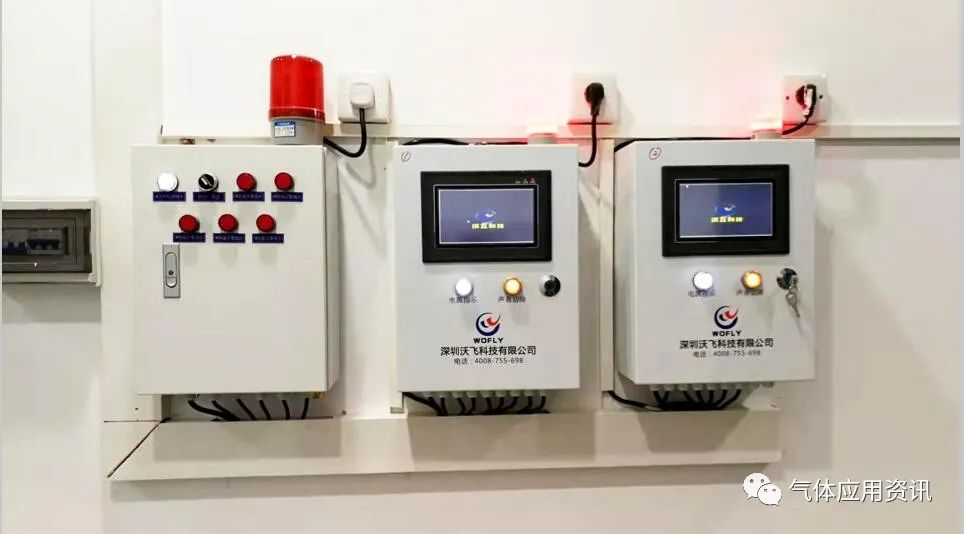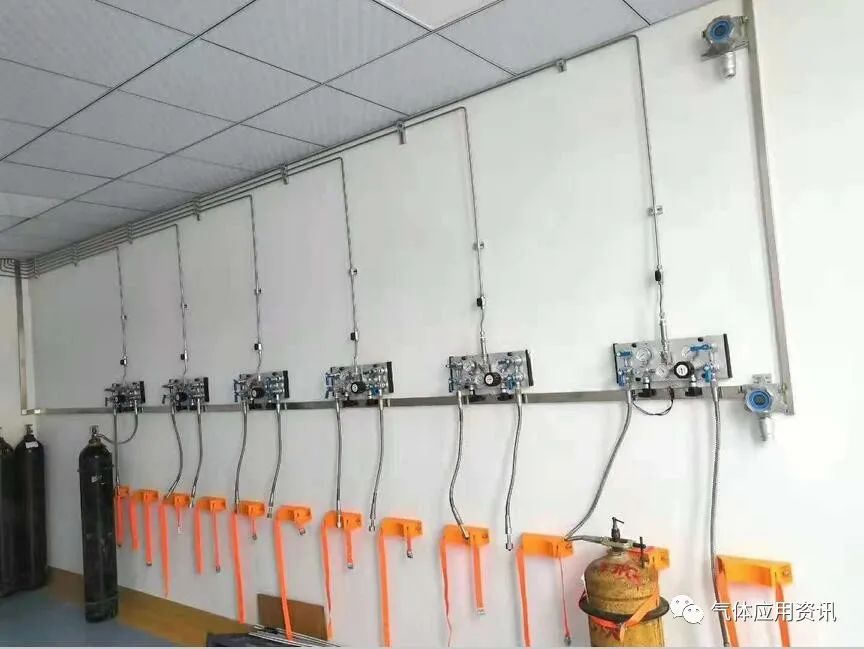Single station system – In some applications, gas is only used to calibrate the instrument. For example, a continuous emission monitoring system (CEMS) only need to calibrate the gas for a few minutes a day. This application clearly does not require a large-scale automatic conversion manifold. However, the design of the delivery system should prevent the calibration gas from being contaminated and minimizes cost related to the replacement of the cylinder.
Single-way manifold with brackets is an ideal solution for such applications. It provides a safe and efficient connection and replacement of cylinders, without struggle with the regulator. When the gas contains a corrosive component such as HCl or NO, a purge assembly should be mounted in the manifold to purge the regulator with an inert gas (usually a nitrogen) to prevent corrosion. Single / station manifold can also be equipped with a second tail. This arrangement allows access to additional cylinders and keeps standby. Switching is manually accomplished using the cylinder cutoff valve. This configuration is usually suitable for calibrating gas because the precise mixing of the ingredients usually varies from cylinders.

Semi-automatic switching system – Many applications need to be used continuously and / or larger than the amount of gas actually used by single-station manifold. Any suspension of gas supply can cause experimental failure or destruction, productivity loss or even the entire facility downtime. The semi-automatic switching system can switch from the main gas bottle or spare gas cylinder without interrupting, minimizing the cost of high downtime. Once the gas bottle or cylinder group consumes exhaust, the system automatically switches to the spare gas cylinder or the cylinder group to obtain a continuous gas flow. The user then replaces the gas bottle as a new cylinder, while the gas still flows from the reserve side. The two-way valve is used to indicate the main side or the spare side when replacing the cylinder.

Post time: Jan-12-2022